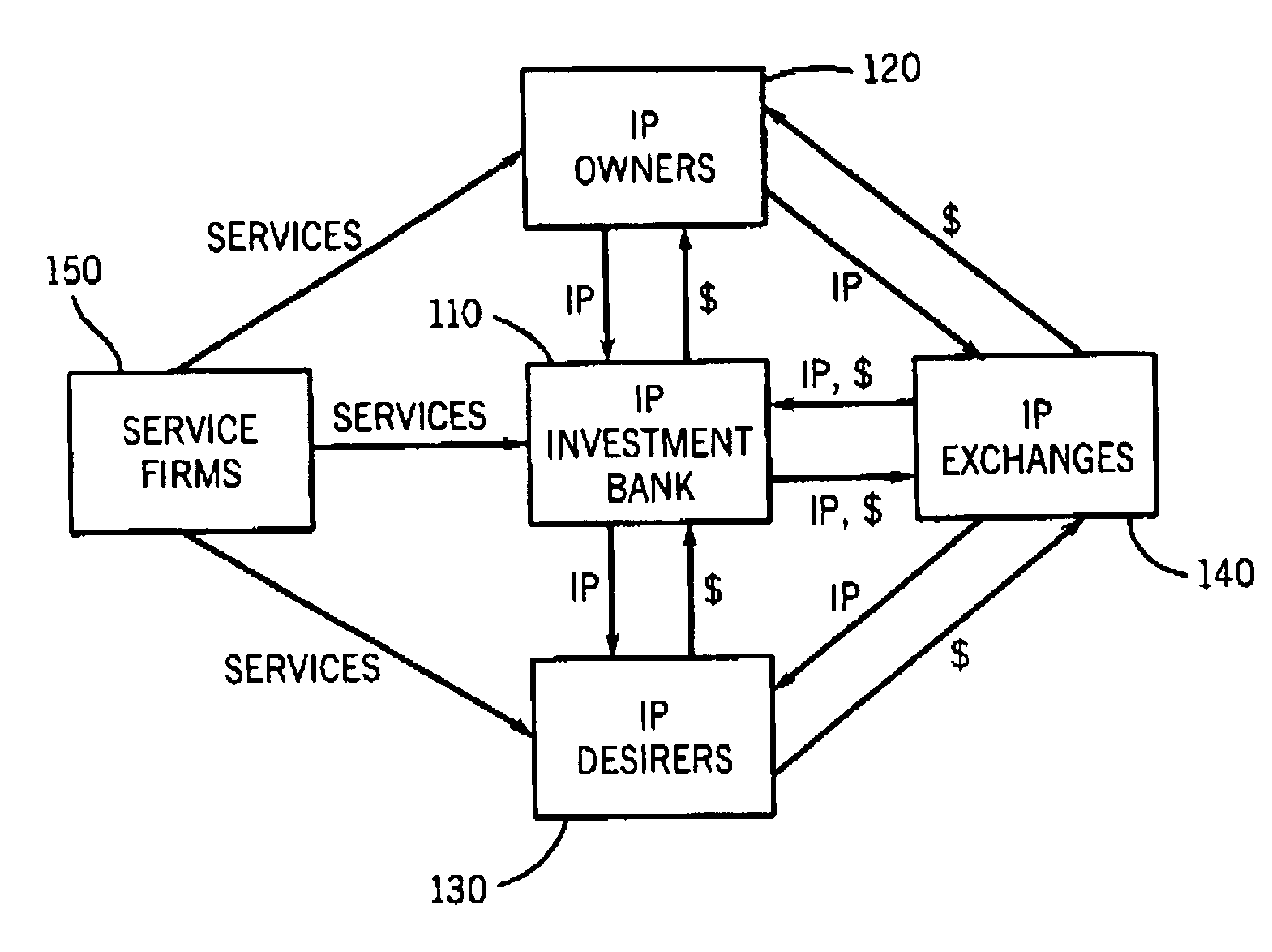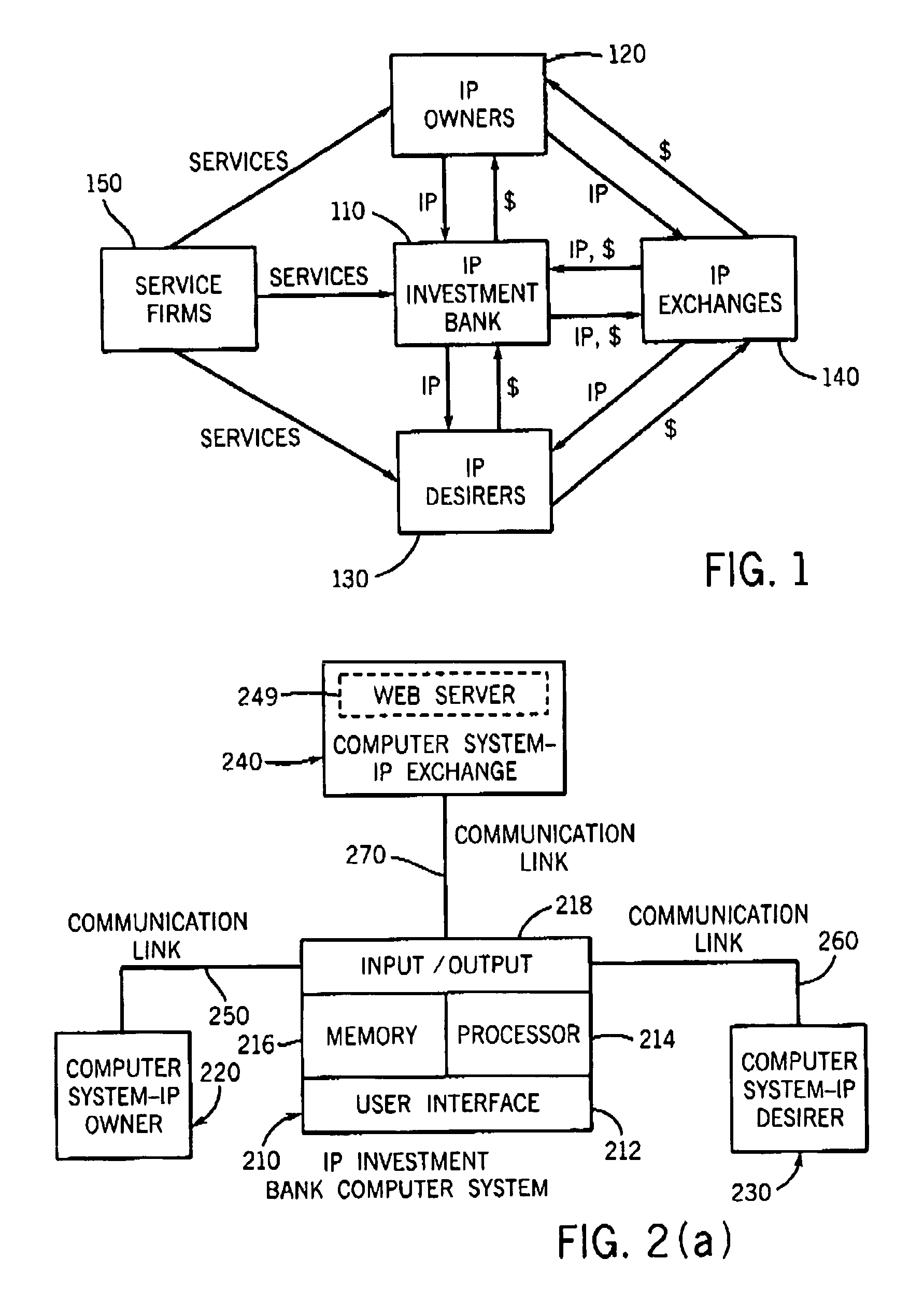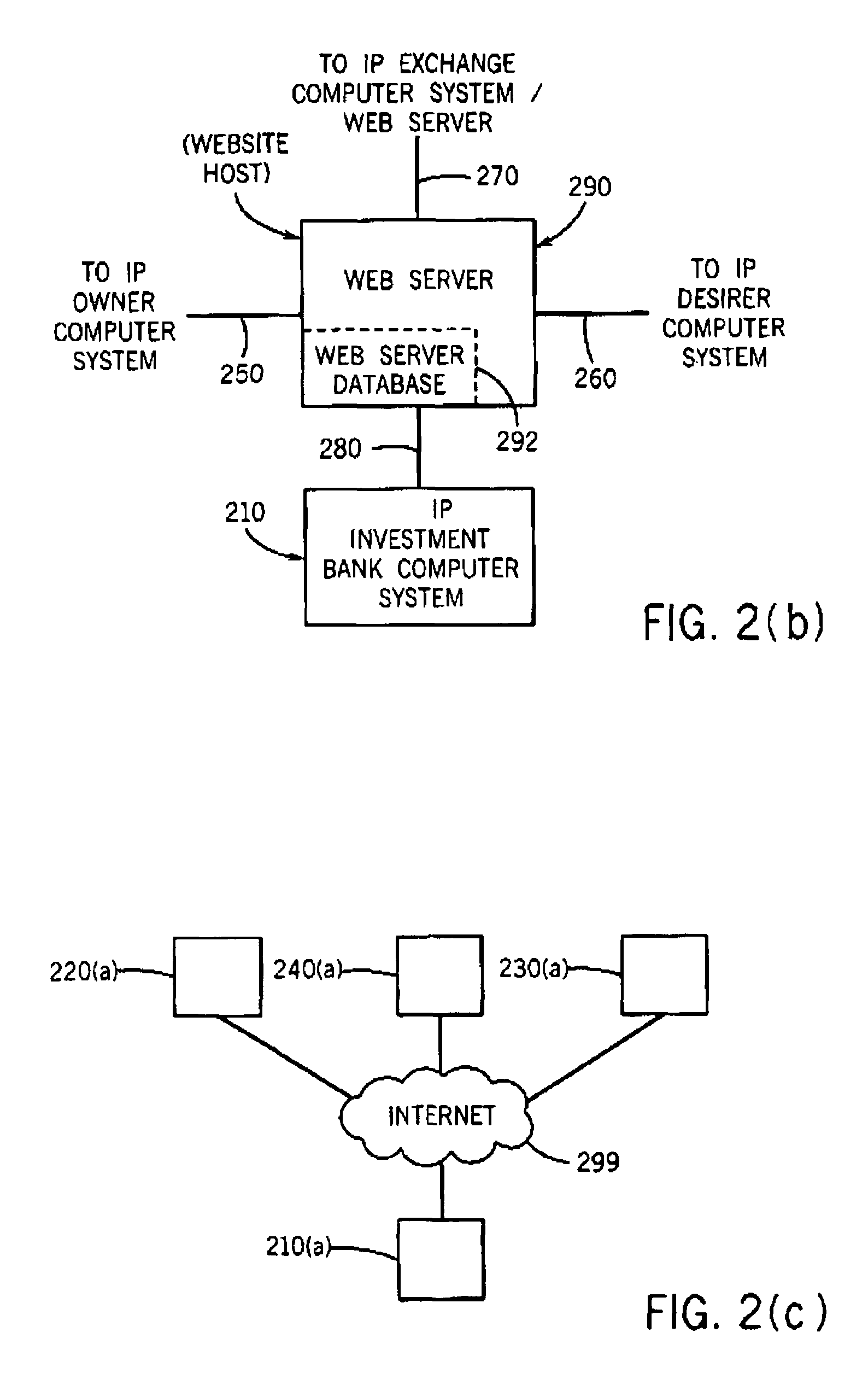These other assets have become increasingly fungible and commoditized due to globalization and modernization of the world economy.
Additionally, very few companies seriously investigate the possibility of selling their patents.
More commonly, many patent holders fail to realize, due to bad judgment or ignorance (or simply due to the complexity and uncertainties that exist in the financial valuation of patents), the potential value of their patents.
Typically, such patent-holders are not aware of all of the potential applications of their patented technologies.
The brokerages less frequently take equity interests in their clients, since the taking of such equity interests is a less reliable arrangement for earning income.
Although intellectual property asset exchanges, law firms and accounting firms with intellectual property asset management programs, and intellectual property brokerages are beginning to provide valuable services, each of these types of institutions has significant limitations in facilitating the licensing or sale of patents.
Law firms and accounting firms are restricted by laws that preclude non-lawyers from entering into partnerships with lawyers.
Such laws tend to limit law firms' ability to hire persons with non-legal (e.g., accounting, financial, or managerial) expertise, and to limit accounting firms' ability to hire persons with traditionally legal expertise (e.g., expertise in obtaining patent rights, enforcing those rights, and developing contracts regarding those rights), although some accounting firms have been attempting to overcome these limitations by offering lawyers very high compensation.
In addition, at least law firms tend to be conservative in attempting to develop new service capabilities that are not strictly legal in nature.
Both of these ways of developing non-legal expertise have significant inefficiencies.
As regulated, service-oriented firms, both law firms and accounting firms face additional constraints that limit their abilities to effectively facilitate the licensing and selling of patents.
Neither law firms nor accounting firms are comfortable with marketing their clients' products or services, which may include licensable or saleable intellectual property assets.
Nor are law firms or accounting firms generally comfortable with the prospect of taking a
financial interest in their clients or clients' assets.
Further, at least law firms face legal rules that preclude (or at least cloud) their ability to take an interest in their clients.
Additionally, both law firms and accounting firms are somewhat, if not completely, limited in representing clients whose interests conflict.
As a result, there are significant barriers to the growth of law firms and accounting firms in their efforts to facilitate the transfer of intellectual property to and from many different clients.
Indeed, law firms and accounting firms are to a significant extent precluded from assisting in deal-making between parties who may be interested in exchanging patent rights simply because the firms are uncomfortable with (or incapable of) representing (or mediating between) parties on opposite sides of a negotiating table.
These limitations on the abilities of law firms and accounting firms to facilitate the licensing and sale of patents affect not only the firms' ability to assist clients in their direct dealings with other parties but also the firms' ability to represent clients on, or to offer advice in regards to, the intellectual property exchanges.
Even though law firms and accounting firms may be able to develop some expertise in representing their clients on the exchanges, providing the services associated with representing clients on the exchanges will likely be inefficient for law firms and accounting firms.
Intellectual property brokerages also are hindered by certain limitations that prevent their effective facilitation of intellectual property transfer.
Although intellectual property brokerages sometimes take equity interests in their clients, generally such brokerages do not purchase, obtain licenses (including the rights to sublicense) in, or otherwise obtain intellectual property rights in the intellectual property of their clients.
Consequently, intellectual property brokerages are hindered by a lack of certain incentives for employees (e.g., a lack of institutional mission) and a lack of flexibility.
Additionally, because the intellectual property brokerages lack ownership of intellectual property assets (or possession of interests in / rights to the intellectual property), the brokerages' value is determined almost exclusively by the talent of their personnel or “human capital.” As with respect to many service firms, this lack of identifiable assets can limit the brokerages' ability to raise capital (e.g., through public trading of the brokerages' stock on stock exchanges).
This inability to raise capital in turn limits the brokerages' effectiveness in facilitating intellectual property transfer.
As in the
biotechnology industries, where identifying
market needs and developing valuable, marketable products requires great expenditures sustained over long periods of time, the identification and development of opportunities for intellectual property transfer can require investments over a long period of item.
Because brokerages lack capital and must respond to the immediate demands of their clients, brokerages must constantly focus on developing the most obvious, easily-attainable, short-term opportunities for intellectual property transfer, and must ignore the more challenging (and often long-term) opportunities.
 Login to View More
Login to View More  Login to View More
Login to View More 


